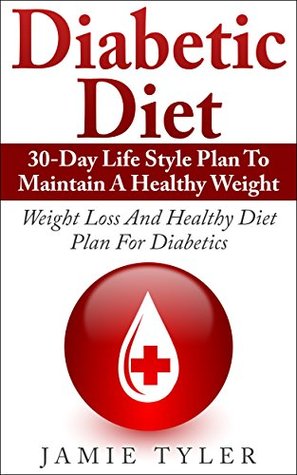
When planning a meal, it is crucial to think about the tastes of your guests. Your guests' preferences and tastes should be reflected in the food you choose. Your menu should be viewed from the perspective of your guest. It's also important to take into account the market. It doesn't matter if the item is in season. This will affect the cost of your operation. It is also important to consider availability of labor and ingredients. These items can have an impact on the quality of your menu. Keep these things in mind when you are planning your menu.
First, determine the cost of your menu. The cost of your food can determine how much you charge for certain dishes. You can make the most out of your budget by setting a fixed budget. Not only will it help you save money, but a well-planned meal plan will also prevent unnecessary expenditures. Your business will be more profitable if you have a well-planned menu. In addition, you can create a customized menu that's unique to your business and will meet your customers' needs.

The next step to menu planning is to identify the supply sources for your menu products. Depending on your location, you might have a difficult time sourcing certain products. You can make informed decisions about what you will serve by knowing what's available. Some foods are only available in certain seasons or regions. Then, you need to consider the budget and the number of employees you'll need to prepare your meals. This will help you choose the right menu to suit your business.
Once you know the prices of your menu items, it's time to plan your menu. This is the most crucial part of menu planning. It can make or break your business. Planning your menu well can help you save money and increase your revenues. A poor menu can damage your brand and reduce your profits. This can make a difference in the success of your business. This is how successful restauranteurs can satisfy their customers' wishes.
Consider the cost of food and how long it takes for certain dishes to be prepared. Also consider what your customer wants. You can create a menu that is popular by determining the cost and time required to prepare it. It is important to factor in the cost to produce and how many workers you will need. By following these guidelines, you'll be able to determine what you'll need to produce.

Consider the cost of your menu. A budget will determine the quality of a menu. If your budget is tight, it's impossible to afford the highest quality food for a reasonable price. Instead, choose the most affordable meals and make a budget. Your kitchen size and number of guests will also be important factors in a good planning plan. You can reduce food waste and increase efficiency while saving money by planning.
FAQ
What is the best way to live a healthy lifestyle?
Living a healthy lifestyle is one that encourages you to eat well, exercise regularly, get enough sleep, and avoids stress. These guidelines will help you live a long, healthy life.
Starting small can make a big difference in your diet, and even your exercise routine. Try walking for 30 minutes each day to lose weight. You can also take up dancing or swimming if you are looking to be more active. You could also sign up to an online fitness platform like Strava, which tracks your activity.
Do I need to count calories
You might be asking "What is the best diet?" or "is counting calories necessary?" This depends on your health and lifestyle.
The Best Diet For Me - Which One Is Right For You?
My current health, my personal goals and lifestyle will determine the best diet for me. There are many different diets, some good and some not so good. Some diets work well for some people and others do not. What can I do to make the right choice? How can I make the best decision?
These are the questions this article will answer. It begins with an overview of the different diets today. Next, we'll discuss the pros and cons for each type of diet. The final step is to determine which one is right for you.
Let's look at some of the main types of diets to get started.
Diet Types
There are three types of diets available: ketogenic, high-protein, and low fat. Let's look at each one briefly.
Low Fat Diets
A low fat diet is a diet that restricts the amount of fats consumed. This is achieved through reducing intakes of saturated fats (butter and cream cheese, for example). They are replaced by unsaturated fats such as avocados, olive oil, and cream cheese. Low fat diets are often recommended to those who wish to lose weight quickly. This kind of diet could cause problems like constipation or heartburn and indigestion. In addition, it may lead to vitamin deficiencies if a person doesn't get enough vitamins from their food.
High Protein Diets
High protein diets are known to restrict carbohydrate intake and promote the consumption of proteins. These diets often have higher levels of protein than most other diets. These diets can help increase muscle mass and decrease calories. They may not be able to provide sufficient nutrition for people who need it. They are not suitable for all people because they can be restrictive.
Ketogenic Diets
Ketogenic diets also go by the name keto diets. They are high in fat and moderate in protein and carbs. They are typically used by athletes and bodybuilders because they allow them to train harder and longer without getting tired. You must adhere to all side effects, including fatigue, headaches, nausea and headaches.
How can I get enough vitamins
You can get most of the daily nutrients you need through your diet. Supplements are an option if you are low in any vitamin. You can purchase a multivitamin that includes all of the vitamins you need. You can also buy individual vitamins at your local pharmacy.
If you are concerned about getting enough nutrients, talk to your doctor about what foods contain the best sources of vitamins. Some examples of rich sources of vitamins E and K include dark green leafy vegetables, such as spinach.
Ask your doctor if you're not sure how many vitamins you should take. Based on your medical history and your current health, your doctor can recommend the correct dosage.
Statistics
- The Dietary Guidelines for Americans recommend keeping added sugar intake below 10% of your daily calorie intake, while the World Health Organization recommends slashing added sugars to 5% or less of your daily calories for optimal health (59Trusted (healthline.com)
- According to the 2020 Dietary Guidelines for Americans, a balanced diet high in fruits and vegetables, lean protein, low-fat dairy and whole grains is needed for optimal energy. (mayoclinichealthsystem.org)
- In both adults and children, the intake of free sugars should be reduced to less than 10% of total energy intake. (who.int)
- WHO recommends reducing saturated fats to less than 10% of total energy intake; reducing trans-fats to less than 1% of total energy intake; and replacing both saturated fats and trans-fats to unsaturated fats. (who.int)
External Links
How To
What does the meaning of "vitamin?"
Vitamins are organic compounds found naturally in food. Vitamins are essential for our bodies to absorb nutrients from the foods we eat. Vitamins are not made by the body, so they must be obtained through food.
There are two types of vitamins: water soluble and fat soluble. Water-soluble vitamins dissolve in water easily. Examples include vitamin C,B1 (thiamine), B2 (riboflavin), B3 (niacin), B6 (pyridoxine), folic acid, biotin, pantothenic acid, and choline. Fat-soluble vitamins can be stored in the liver or in fatty tissue. Examples include vitamin D, E, K, A, and beta carotene.
Vitamins are classified according their biological activity. There are eight major groups of vitamins:
-
A - Vital for normal growth and maintaining good health.
-
C – essential for proper nerve function.
-
D – Essential for healthy teeth, bones and joints
-
E - needed for good vision and reproduction.
-
K - required for healthy muscles and nerves.
-
P - essential for strong bones, teeth and tendons
-
Q – aids digestion of iron and iron absorption
-
R is required for the production of red blood cells.
The recommended daily allowance (RDA), for vitamins, varies depending upon age, gender, or physical condition. The U.S. Food and Drug Administration (FDA) sets the RDA values.
For example, the RDA for vitamin A is 400 micrograms per dayfor adults 19 years or older. Pregnant women require 600 micrograms daily to support fetal development. Children ages 1-8 require 900 micrograms per day. Children under 1 year old require 700 micrograms daily, while infants over one year old need 500 micrograms every day. This decreases between 9 and 12 months.
Children ages 1-18years who are obese need 800 micrograms per day while those who are overweight need 1000 micrograms per day and children who are underweight need 1200 micrograms per day to meet their nutritional needs.
Children ages 4-8 years who have been diagnosed with anemia need 2200 micrograms per day of vitamin C.
2000 micrograms are required daily for good health in adults over 50. Due to their increased nutrient needs, pregnant and breastfeeding women need 3000 micrograms daily.
Adults over 70 need 1500 micrograms daily, as they lose 10% of their muscle every ten years.
Women who have been pregnant or are lactating require more than the RDA. Pregnant women require 4000 micrograms daily during pregnancy, and 2500 micrograms every day after birth. Breastfeeding mothers require 5000 micrograms daily when breast milk production is occurring.